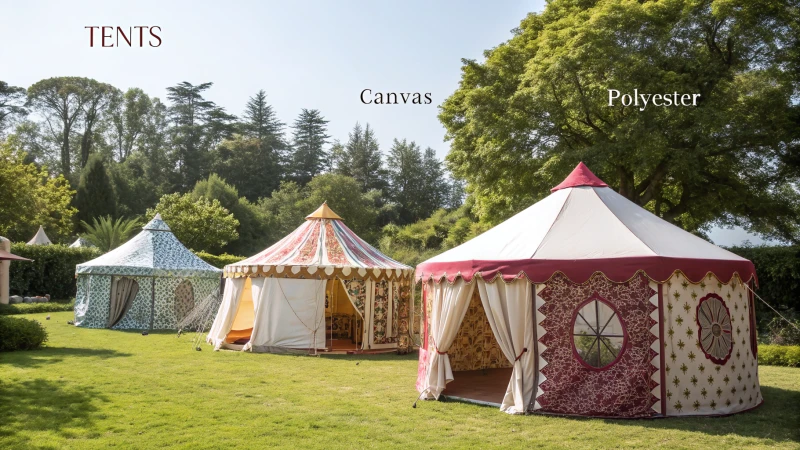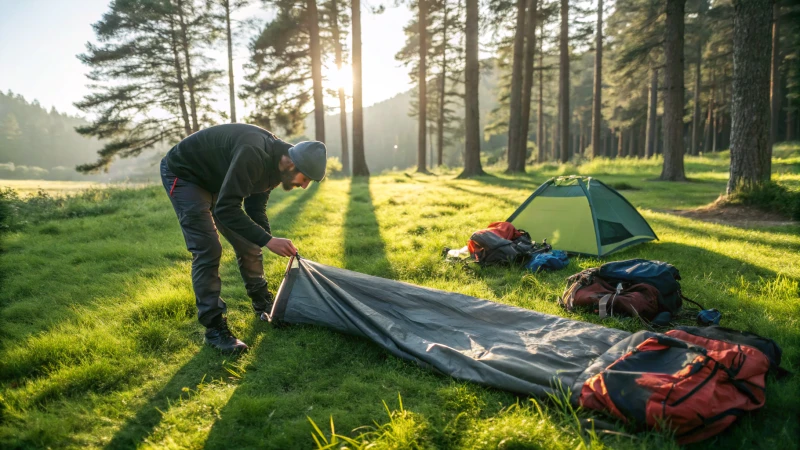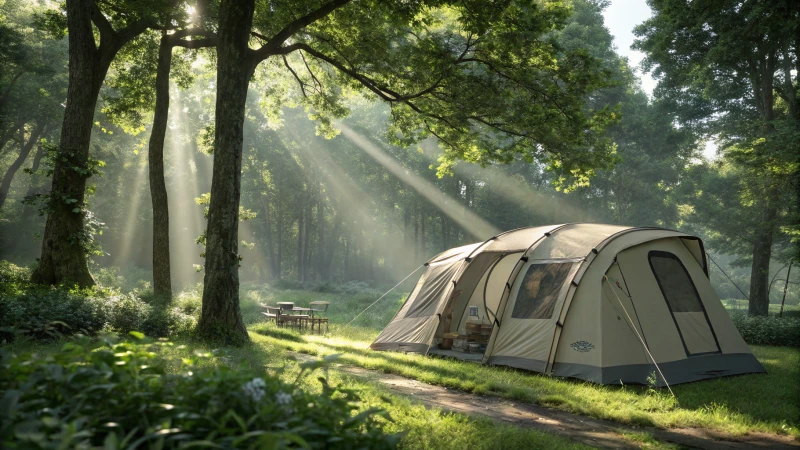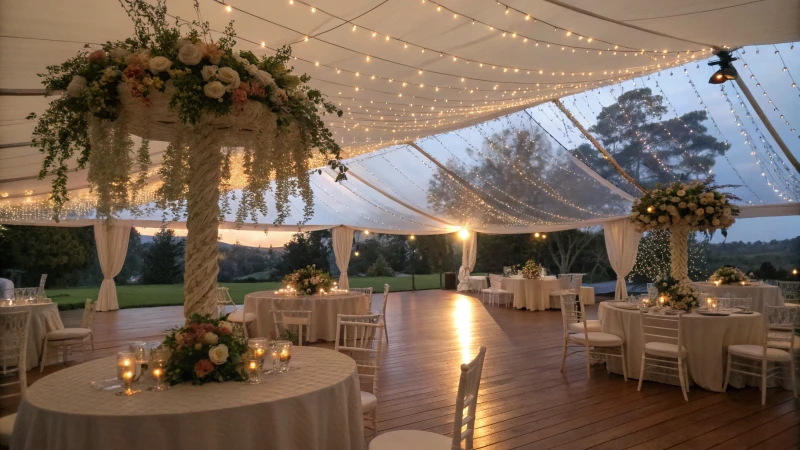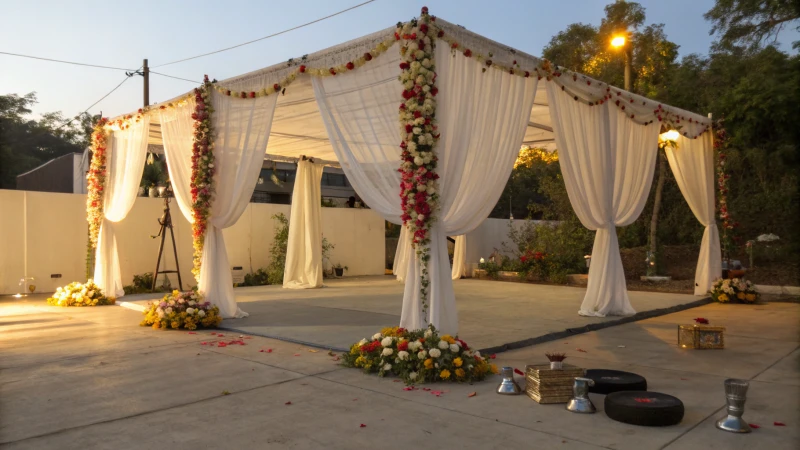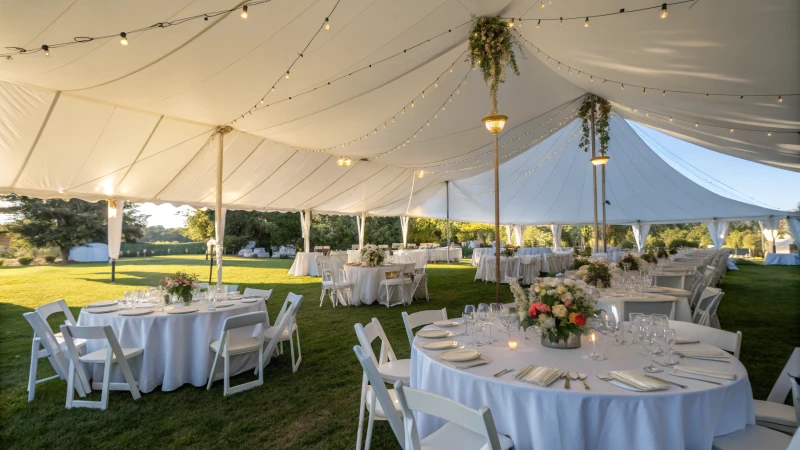
Choosing the right tent size for your event can feel like solving a puzzle, but it’s key to creating the perfect atmosphere.
To choose the right tent size, consider your guest count, seating arrangements, and any additional features like dance floors or buffet tables. Use size charts for general guidance and consult with professionals for complex setups.
When planning my own events, I learned that the tent’s size can make or break the experience. Beyond guest count and seating, think about the vibe you want to create. Is it an intimate gathering or a grand celebration? Consider the dance floor for wild moves and space for a cozy lounge area where guests can relax. Trust me, these details turn a good event into an unforgettable one. Let’s dive deeper into these considerations to ensure your tented event is seamless and memorable.
Guest count is the only factor in choosing tent size.False
Other factors like seating and features also influence tent size.
Consulting professionals can aid in selecting the right tent size.True
Professionals offer expertise for complex setups and accurate sizing.
How Do You Decide on the Right Tent Size?
Have you ever wrestled with a tent that’s either too cozy or way too spacious? Let’s find the sweet spot for your next adventure.
When choosing a tent size, think about the number of people sharing it, how much gear you’ll store, the weather you’ll face, and your planned activities. These factors help ensure your tent is comfortable and practical for your camping adventure.
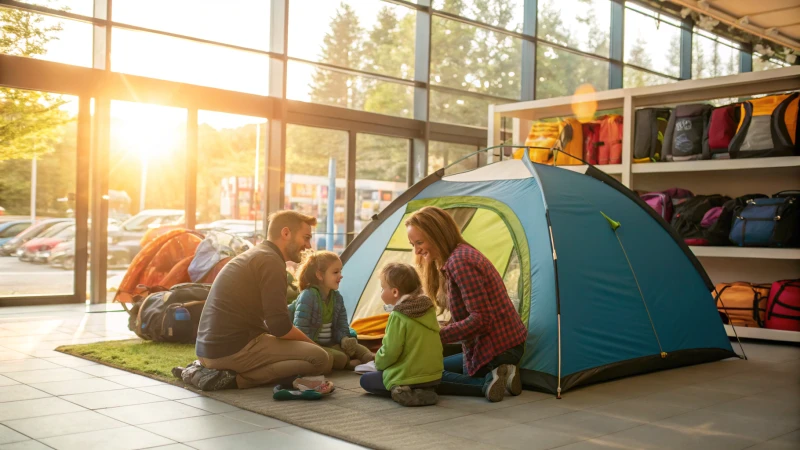
Assessing the Number of Occupants
I remember one camping trip where we underestimated the number of occupants. Imagine trying to fit five people into a "four-person" tent after a day of hiking—it was like playing a real-life game of Tetris with our gear and bodies. So, it’s crucial to start by figuring out how many folks will be bunking with you. Tent capacity labels, like two-person or four-person, are often optimistic and assume you’ll have minimal gear. If you’re like me and pack for every "just in case" scenario, consider going up a size to keep everyone comfy. Determining tent capacity1 can help dodge those sardine-like sleeping situations.
Gear Storage Requirements
I’m a big fan of having my gear organized and easily accessible. There’s nothing worse than fumbling around in the dark for your flashlight because your tent is too small. Backpackers like me might lug around more equipment than casual campers, so choosing a tent with vestibules or extra storage compartments is smart. Sometimes, just a slight increase in size can make all the difference in keeping your camping trip smooth and enjoyable.
Weather Considerations
I’ll never forget that stormy night on a camping trip where my friend’s small tent almost blew away. Weather can seriously impact your tent choice. In rainy or cold climates, a larger tent offers comfort during long indoor spells, while high winds might call for a compact, stable structure. Looking into weather-resistant tents2 ensures your shelter can handle whatever Mother Nature throws at you.
Activity Type and Duration
The way you plan to spend your time can also influence your decision. On extended trips or when facing bad weather, you’ll appreciate a larger tent to relax in. On the other hand, if you’re aiming for mobility and simplicity, a smaller, lightweight tent might be your best bet.
Utilizing a Tent Size Chart
For an easy reference, here’s a quick guide:
| Event Type | Recommended Space |
|---|---|
| Couples | 20-30 sq ft |
| Small Families | 35-50 sq ft |
| Large Groups | 60+ sq ft |
Using a tent size chart3 can help streamline your decision-making process by offering guidelines based on group size and event type.
Taking all these factors into account helps ensure that you pick a tent that matches your needs perfectly, balancing comfort and practicality for a successful outdoor escapade.
A tent for two people is always sufficient for two campers.False
Tent capacity often assumes minimal gear; extra equipment may need more space.
Weather conditions can dictate the size of the tent needed.True
In harsh weather, a larger tent offers comfort and stability indoors.
How Does the Type of Event Determine Tent Size?
Imagine transforming a mere gathering into a memorable celebration with the right tent size! But how does your event type dictate the tent you choose?
The type of event plays a crucial role in determining tent size due to the differing space needs for seating, activities, and additional features like stages or dance floors. Understanding these requirements ensures you utilize space effectively.
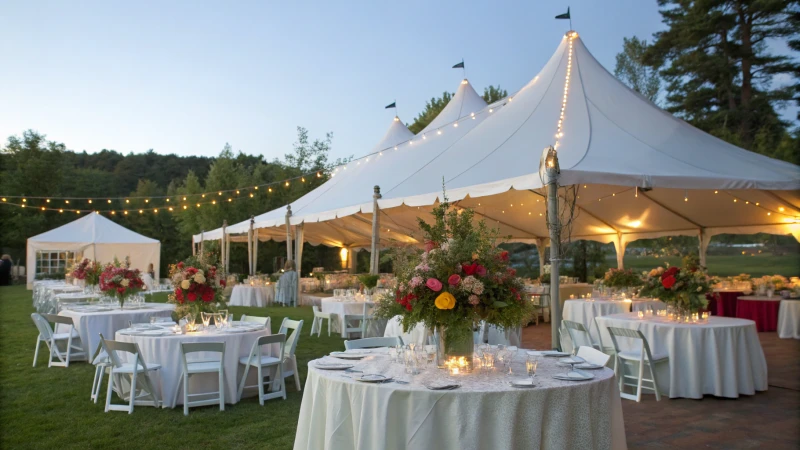
Event Type and Space Allocation
Different events have unique space needs, impacting the tent size decision. I remember planning my daughter’s wedding, where the tent became the centerpiece of our venue. Formal events like weddings or corporate galas often require larger tents. This is because these events typically involve seated dining, stages for speeches, and elaborate decor. For instance, a corporate dinner4 might require space for a stage and tables, necessitating 12–15 square feet per person.
In contrast, casual gatherings such as birthday parties or informal networking events may require less space per attendee. When I threw a surprise party for my best friend, we opted for a standing-room layout5 that allowed guests to mingle freely, needing only about 5–6 square feet per person. The casual nature allows for more flexible and compact arrangements.
Incorporating Additional Features
The type of event influences additional features like dance floors or buffet stations, altering tent size needs significantly. At my cousin’s wedding reception, including a dance floor was non-negotiable; hence, you should allocate 3–4 square feet per dancer. It was magical watching everyone hit the floor. Buffet tables demand extra room too—approximately 100–150 square feet per station.
For exhibitions or trade shows, consider the space needed for displays and walking paths. When I helped organize a local art fair, each exhibition booth6 might need 50–100 square feet to accommodate both artwork and visitors comfortably.
Seating and Layout Considerations
Seating arrangements heavily impact the tent’s dimensions. For example, banquet seating at my company’s annual dinner required 10–12 square feet per person due to the need for tables and chairs. In contrast, theater-style seating may only need 8–10 square feet per person.
Standing events like cocktail parties or networking sessions are different beasts altogether. When I organized a community meet-and-greet with standing events7, we prioritized intimacy with less space per guest, allowing us to create a more inviting atmosphere.
Location and Venue Constraints
The location of your event can also affect tent size selection. I’ll never forget trying to fit a tent into a scenic but uneven garden—those trees were lovely but definitely made things tricky! Consider venue restrictions such as available space and potential obstructions like trees or uneven terrain. These factors might require creative tent placements or selecting a different tent type altogether, such as a marquee tent8.
In essence, understanding how different event types influence your space needs is key to picking the right tent size. By considering factors such as seating arrangements, additional features, and venue constraints, you ensure not just a seamless but also an unforgettable event experience for everyone involved.
Formal events require larger tents than casual gatherings.True
Formal events need more space for seating, stages, and decor.
Standing-room layouts need more space per person than seated layouts.False
Standing-room layouts require less space, around 5-6 square feet per person.
What Are the Common Mistakes to Avoid When Selecting Tent Size?
Ever had an event where the tent felt too cramped or absurdly spacious?
The biggest pitfalls in choosing tent size involve guest count misjudgments, overlooking event type, and neglecting venue or weather considerations. Avoid these by thorough planning, accounting for activities and features, and seeking expert advice.
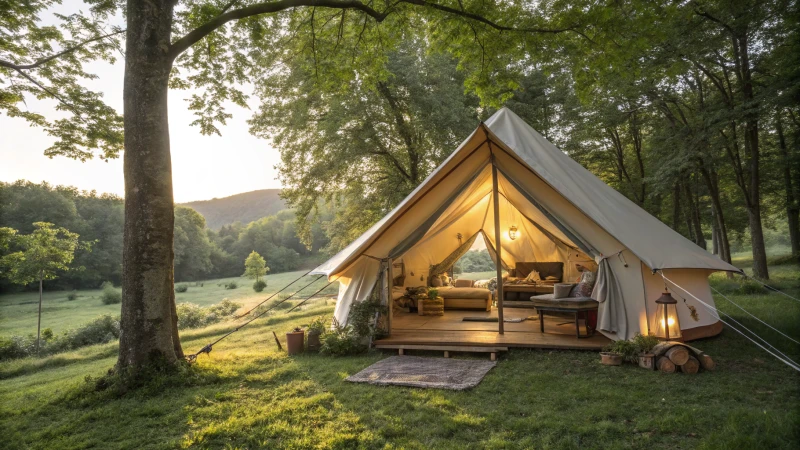
Misjudging Guest Count
I remember one summer, hosting a family reunion in our backyard. We underestimated the guest list, thinking a small tent would suffice. But once the kids started running around and the elders needed their space, it was like a game of sardines! Ensuring there’s enough room for everyone to comfortably mingle, sit, or dance is key. For reference:
| Arrangement | Space per Person |
|---|---|
| Banquet | 10–12 sq. ft. |
| Theater | 8–10 sq. ft. |
| Standing | 5–6 sq. ft. |
Consider different activities9 guests may engage in.
Overlooking Event Type
Different events have their unique demands. Take weddings, for example—there’s nothing quite like seeing a beautifully decorated tent with ample room for dining and dancing. It’s not just about fitting people but creating an atmosphere. For casual parties, you might need less space, but it’s crucial to consider how guests will interact.
Casual parties10 might need less room but still demand attention to detail.
Ignoring Additional Features
Once, during an outdoor concert, the stage setup was overlooked until the last minute. We ended up squeezing it into the corner, which wasn’t ideal. Planning for features like dance floors or buffet tables is essential.
For instance:
- A dance floor requires 3–4 square feet per dancer.
- Food stations11 might need up to 150 square feet each.
Underestimating Venue Constraints
The venue’s quirks can be sneaky. I learned this lesson while setting up for a friend’s garden wedding—we had to maneuver around trees and uneven ground, turning what seemed like ample space into a puzzle! Always measure your site thoroughly.
Failing to evaluate the venue can result in misfits or logistical nightmares due to obstructions12.
Disregarding Weather Plans
Weather can turn on you fast. During an outdoor festival, a sudden rainstorm turned our tent into a refuge for soaked attendees. Having covered walkways or extra space for fans and heaters can make all the difference.
Consider adding covered walkways or space for climate control equipment like heaters or fans.
Neglecting Professional Advice
I’ve found that leaning on experts can be a game changer. Tent rental specialists offer insights that I wouldn’t have thought of, saving time and avoiding costly errors.
Consulting with tent rental experts or event planners provides experience-based advice that could help you avoid costly mistakes and make the most of your space.
Tent Size Chart Reference
Here’s a handy guide:
| Event Size | Square Feet Needed |
|---|---|
| Small (20–50 guests) | 400–800 |
| Medium (50–100) | 800–1,200 |
| Large (100–200) | 1,500–2,400 |
| Extra Large (200+) | 2,500+ |
thoughtful planning and considering these factors ensure your event is a hit without the stress of spatial blunders.
Most guests stay seated throughout the event.False
Guests often move around for activities, requiring varied space needs.
Formal events require more tent space than casual ones.True
Formal events need space for decor and dining setups, unlike casual ones.
When Is Professional Advice Necessary for Tent Sizing?
Picture this: You’re hosting the event of the year, and the tent size has to be just perfect. But when do you call in the experts? Let’s dive into when professional advice is key.
Professional advice on tent sizing is crucial when managing complex event layouts, accommodating a large number of guests, or dealing with unique venue challenges. Experts provide tailored solutions to ensure everything fits seamlessly and comfortably.
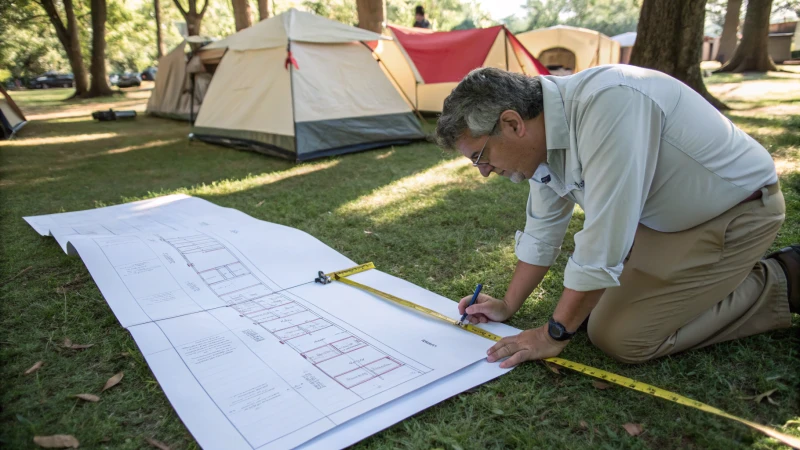
Understanding Complex Layouts
Imagine trying to fit a jigsaw puzzle together without knowing how many pieces you have. That’s what planning an event with multiple zones can feel like! Whether it’s creating spaces for dining, dancing, or lounging, I’ve found that consulting with experts can be a game-changer. They have a knack for assessing space distribution and suggesting configurations13 that perfectly align with your vision.
- Multiple Zones: Dining, lounging, and dancing areas
- Zone Allocation: Use expert guidance for efficient space distribution
Managing High Guest Numbers
There was this one time I hosted a large family reunion. With so many people, I realized that ensuring everyone had enough room was no small feat. Professionals bring experience and advanced tools14 to the table, calculating just the right square footage per guest, taking into account seating and movement flow. Here’s a handy guide based on my experiences:
| Guest Count | Suggested Tent Size |
|---|---|
| 100-200 | 1,500-2,400 sq ft |
| 200+ | 2,500+ sq ft |
Navigating Unique Venue Constraints
Planning an event in a venue with uneven terrain or limited space can feel like trying to build a sandcastle in a storm. I remember an event where the site was dotted with charming old trees — beautiful but tricky! Expert advice was invaluable. They conducted on-site evaluations and recommended custom solutions15 that optimized space without sacrificing design.
- Challenges: Uneven terrain, restricted areas
- Expert Solutions: Customized tent structures to fit the venue
Addressing Weather and Climate Concerns
Weather — it’s the ultimate wild card! I recall a wedding where unexpected rain could have dampened spirits. Professionals help by planning for contingencies16 like extra coverings or climate control equipment. Trust me, having a plan B is always comforting.
Incorporating Additional Features
Have you ever tried to squeeze in a dance floor or buffet station last minute? Not fun! For events with stages, bars, or other features, getting professional input can save you from logistical headaches. They assess these needs and guide you on the extra space needed to integrate everything smoothly into the layout17.
Expert advice is essential for events over 200 guests.True
Professionals calculate the necessary tent size to ensure comfort and safety.
Unique venues rarely require professional tent sizing advice.False
Venues with constraints need expert evaluations for optimal tent solutions.
Conclusion
Choosing the right tent size for your event involves considering guest count, seating arrangements, additional features, and venue constraints to ensure comfort and functionality.
-
Learn about estimating the right tent capacity to avoid cramped conditions and ensure comfort during camping trips. ↩
-
Explore weather-resistant tents that can withstand harsh conditions, ensuring safety and comfort during your adventures. ↩
-
Utilize a detailed tent size chart to match your camping needs with the appropriate tent dimensions effortlessly. ↩
-
Learn how to arrange seating for corporate dinners effectively, ensuring comfort and space efficiency. ↩
-
Explore tips on optimizing layouts for standing-room events to maximize space and attendee comfort. ↩
-
Understand the space requirements for exhibition booths to plan effectively for your next trade show. ↩
-
Find creative ideas for planning standing events that engage attendees in limited spaces. ↩
-
Discover the benefits of using marquee tents for events with unique venue challenges. ↩
-
This link offers insight into various activities at events that impact space requirements. ↩
-
Learn how different event types affect tent size needs and avoid common pitfalls. ↩
-
Understand the space needed for food stations to prevent overcrowding. ↩
-
Get tips on measuring venues to ensure proper tent fitting and placement. ↩
-
Consulting an expert ensures efficient space use in complex layouts, enhancing event flow. ↩
-
Professionals use advanced tools to accurately determine necessary square footage for guests. ↩
-
Experts recommend tailored solutions to overcome venue constraints without design compromise. ↩
-
Professionals plan for weather contingencies to ensure guest comfort despite climate challenges. ↩
-
Experts ensure sufficient space for integrating additional features smoothly into the layout. ↩


